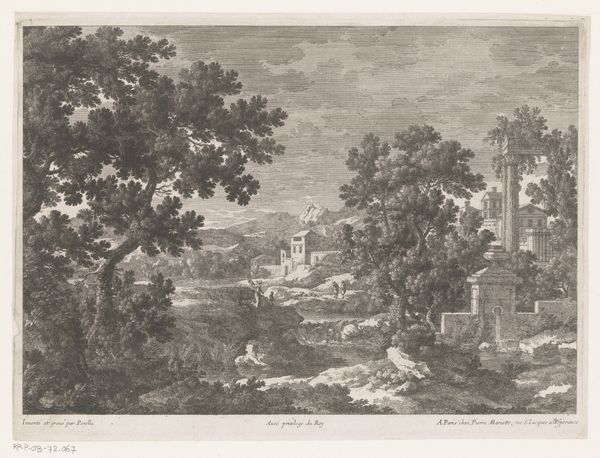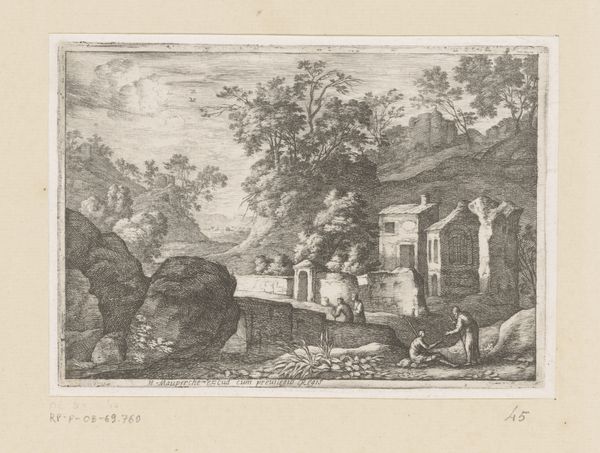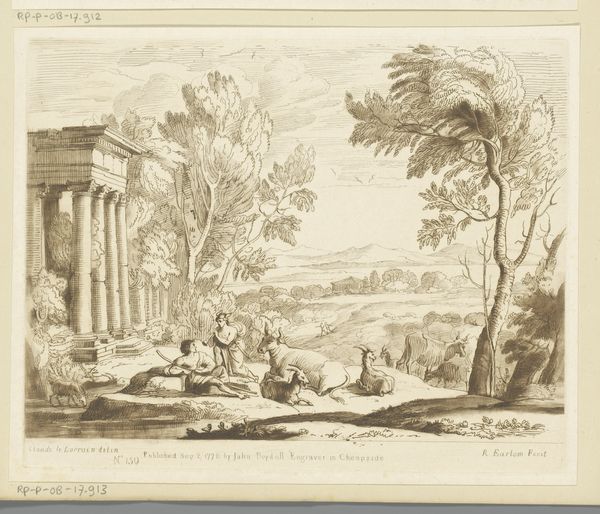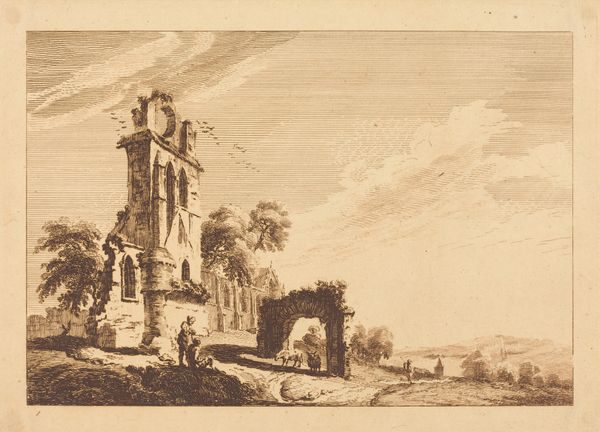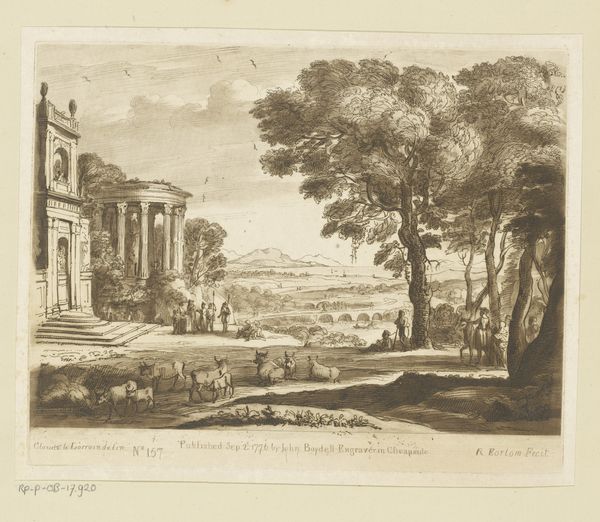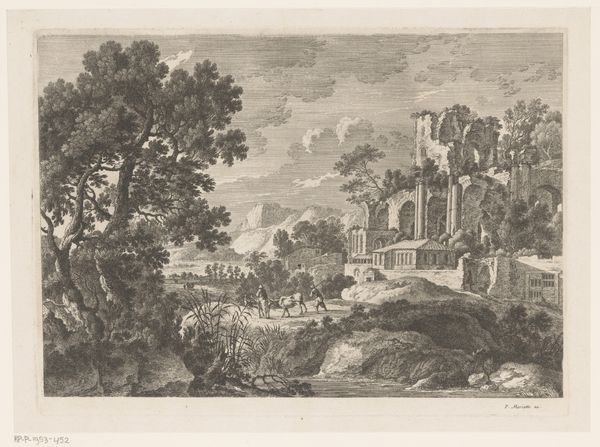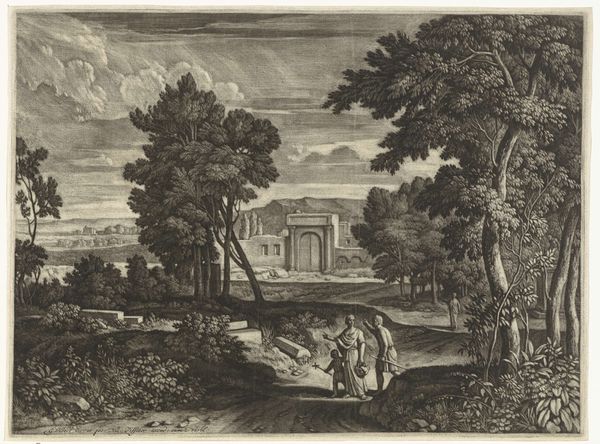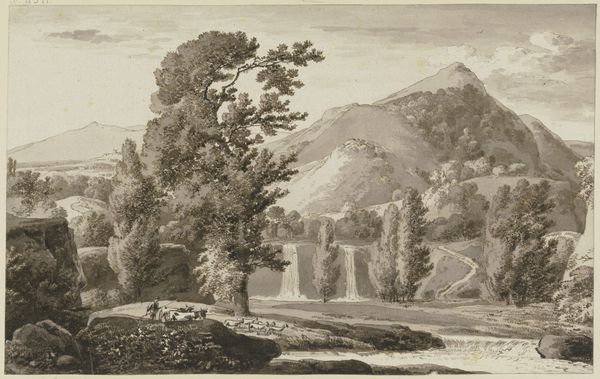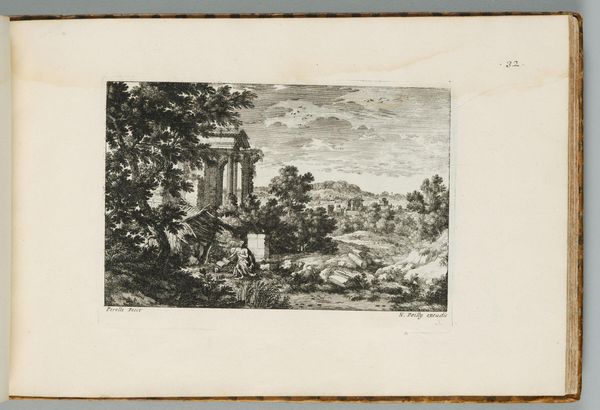
print, etching, architecture
#
baroque
#
dutch-golden-age
# print
#
etching
#
landscape
#
classical-realism
#
figuration
#
history-painting
#
architecture
Dimensions: height 193 mm, width 260 mm
Copyright: Rijks Museum: Open Domain
Editor: This etching, “Landschap met figuren voor een antieke ruïne” from around the mid-17th century, is attributed to Claude Goyrand and is currently held in the Rijksmuseum. The ruin gives a sense of drama but also of romantic serenity with the landscape and figures included in the scene. What's striking to you about this particular landscape? Curator: The placement of this ruin is rather curious, isn’t it? These architectural remnants weren't simply relics of the past but potent symbols for the Dutch Golden Age audience. Ruins spoke of vanished empires and served as reminders of the transience of earthly power. But consider, why place such an explicit classical reference in a distinctly Dutch landscape? Editor: Hmmm...was it maybe a commentary on the Dutch Republic itself? A warning against hubris, perhaps? Curator: Precisely! The Dutch, newly independent and thriving, were acutely aware of the ebb and flow of history. Landscapes such as these prompted viewers to contemplate their own place in the historical narrative. This image suggests a cultural dialogue between the present and the past. Notice the figures; they seem to admire, yet also measure themselves against the backdrop of fallen grandeur. Editor: So, it's not just a pretty picture but also a kind of… political statement? A cultural mirror reflecting Dutch anxieties and aspirations? Curator: Exactly. These "landscapes" were rarely pure representations of nature, but stages upon which ideas about nationhood, power, and the human condition were debated. The medium of print itself plays a role. As easily reproducible images, these ideas circulated widely, influencing public opinion and shaping cultural identity. What was your perspective after we discussed this artwork? Editor: I definitely understand more how landscapes can be powerful messages and I am intrigued to keep exploring how history influences these types of art pieces.
Comments
No comments
Be the first to comment and join the conversation on the ultimate creative platform.

